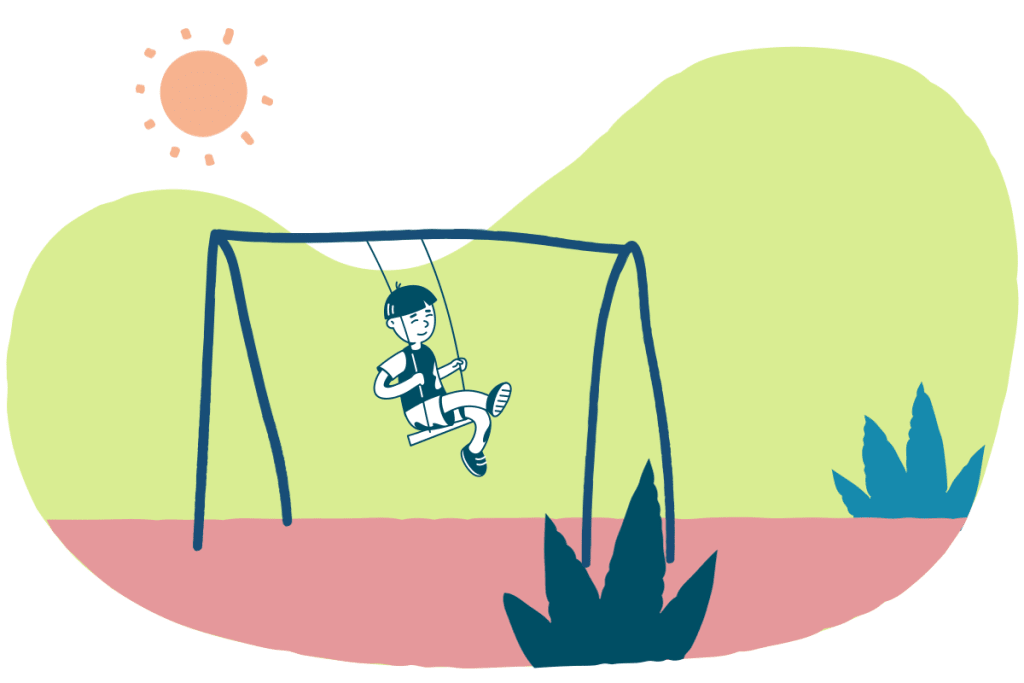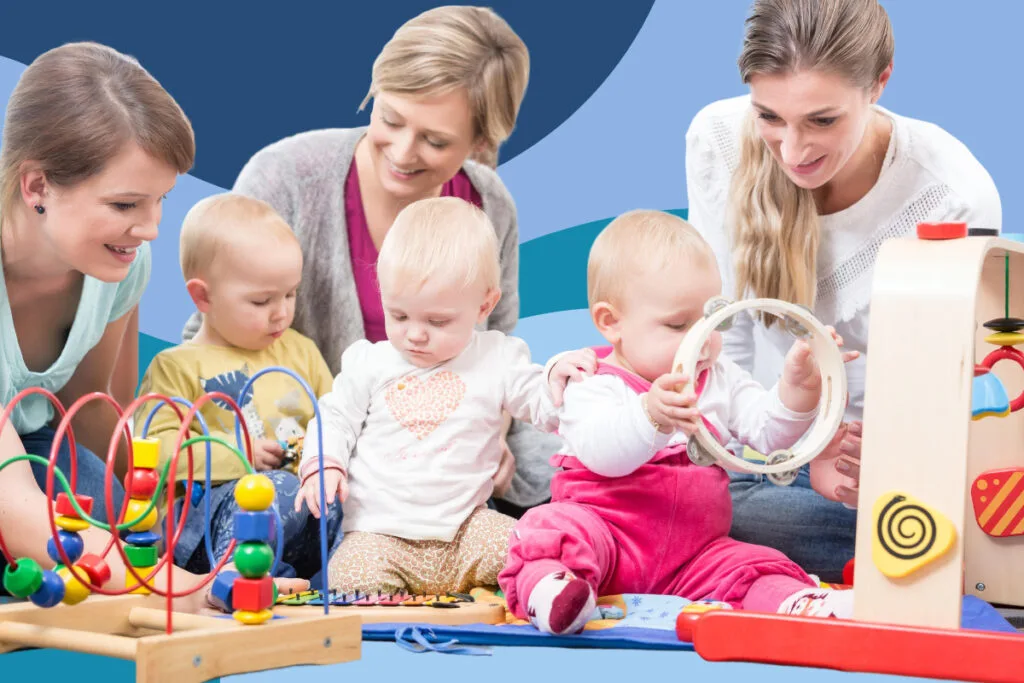TABLE OF CONTENTS
Play is a crucial part of healthy child development. This fun activity is often a part of young children’s daily routine. Children learn important developmental skills through different stages of play.1 Social play is a type of play that provides children with an important and unique learning environment for social skills development through peer interaction.
Social play enables play-based learning in the following ways:
- Improve physical strength, cognitive skills, and social emotional development.
- Help children engage with the world around them and develop life skills.
- Promote resilience and improve confidence.
- Facilitate problem-solving skills development.
- Teach children how to share and resolve conflicts.

Mildred Parten Theory
Mildred Parten, a sociology professor at the University of Minnesota’s Institute of Child Development, published a classic study in 1932 on the progressive stages of play development.
By observing the behavior of preschool children, she found that social participation increased with age in free play.
Based on her observations of children, Parten formulated a theory and classification of children’s play corresponding to the stages of children’s development.2
Mildred Parten Stages Of Play in Early Childhood
Here’s an overview of Parten’s six developmental stages of play with social participation.
The older the child, the more they participate in the higher social stages of play. These are powerful forms of learning for young children.3
Unoccupied Play
Unoccupied play is usually found in very young children aged from birth through three.
In the first few months of life children typically begin this first common form of play.
This is the stage of development where babies or young children seemingly make a lot of random movements with their arms, legs, hands, and feet, but they do not engage with others.
During this time children do not seem to be playing but occupy themselves with watching anything that happens to be of momentary interest.
Onlooker Play
After the unoccupied play stage, children move on to the onlooker stage.
This is most common in children ages two and a half to three years old.
The onlooker type of play occurs when a child watches and observes other children at play, but there is no direct interaction.
This is the first sign of children showing interest in social aspects of play by observing, asking questions, and making suggestions to others. However, they do not directly participate in the play.
As opposed to unoccupied play, the onlooker is absolutely observing a particular group of children rather than anything else that happens to be interesting at the moment.
In order to be able to see and hear everything going on, the child stands or sits within speaking distance of the group.
Solitary Play
Playing alone or solitary play is the third stage of play behaviors.
As the name implies, a child spends much of their time playing alone with toys that are not the toys used by other children nearby.
In solitary play, the child is usually so absorbed in their own play that they show no interest if other children are nearby and do not bother to approach them.
During this play stage, children can develop their personal skills including motor skills, tactile skills, and decision-making skills.
A good example is block building. It involved locating and placing each piece in its desired position. While working on connections between objects, children exercise their thinking skills.
Additionally, foam blocks provide unique sensory experiences.4
Parallel Play
Parallel play is commonly found in two-year-olds. In this stage, children play independently in parallel play, but the activity they choose or the toys they play with are similar to those used by other children around.
Nevertheless, they do not mimic how other children play with the toy and do not attempt to change the way other children play. They play beside rather than with other children.
Parallel play is considered one of the first signs of simple social play in young children. Children pass through this “stage” as they progress from solitary players to social ones.
Even though there is no direct social interaction between the child and other children, there is a social element in the fact that they choose to play with the same toys.5

Associative Play
Often, children progress to associative play after the parallel play stage. In associative play, group activities are loosely structured.
Children participate in a common or similar activity, but may have separate goals and focuses. While they may interact with each other, there is little actual cooperation.6
As children grow older, associative play becomes more common.
This stage of play teaches children how to get along with others. It teaches cooperation and improves language skills.
There are no rigid rules in associative play.
Children in the group may be playing with similar toys or engaging in the same type of play, but not necessarily doing the same thing.
Cooperative Play
Associative play and cooperative play are closely related and sometimes difficult to distinguish.7
In cooperative play, a child plays in a group organized for producing a product or for achieving a common goal.
Children begin the cooperative type of play at around the age of three.
Because younger children have difficulty expressing themselves verbally, they tend not to participate.
There is a distinct sense of belonging or not belonging among the children in the group.
Only one or two children direct the goal-oriented group activities.
The children may divide labor according to their roles.
Cooperative play helps children develop communication skills and advanced organization skills as they work on a shared objective during gameplay.
Board games and role-playing games are some of the most common forms of cooperative play. Another good example is a team game like “Simon Says” or “Follow The Leaders.”
References
- 1.Milteer RM, Ginsburg KR, Mulligan DA, et al. The Importance of Play in Promoting Healthy Child Development and Maintaining Strong Parent-Child Bond: Focus on Children in Poverty. Pediatrics. Published online January 1, 2012:e204-e213. doi:10.1542/peds.2011-2953
- 2.Rubin KH, Maioni TL, Hornung M. Free Play Behaviors in Middle- and Lower-Class Preschoolers: Parten and Piaget Revisited. Child Development. Published online June 1976:414. doi:10.2307/1128796
- 3.Parten MB. Social participation among pre-school children. The Journal of Abnormal and Social Psychology. Published online October 1932:243-269. doi:10.1037/h0074524
- 4.Libby ME, Weiss JS, Bancroft S, Ahearn WH. A Comparison of Most-to-Least and Least-to-Most Prompting on the Acquisition of Solitary Play Skills. Behav Analysis Practice. Published online June 2008:37-43. doi:10.1007/bf03391719
- 5.Bakeman R, Brownlee JR. The Strategic Use of Parallel Play: A Sequential Analysis. Child Development. Published online September 1980:873. doi:10.2307/1129476
- 6.Coplan RJ, Ooi LL, Kirkpatrick A, Rubin KH. Social and nonsocial play. In: Play from Birth to Twelve. Routledge; 2015:109-118.
- 7.Rubin KH, Watson KS, Jambor TW. Free-Play Behaviors in Preschool and Kindergarten Children. Child Development. Published online June 1978:534. doi:10.2307/1128725
